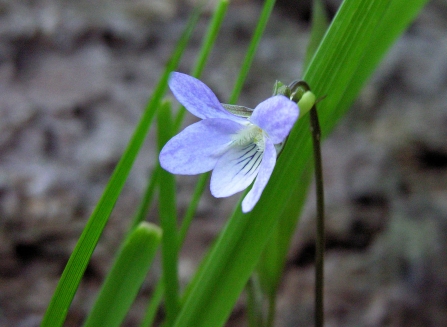Please note this is a closed site with no public access except during organised events.

Higher Kiln Quarry
Know before you go
Dogs
When to visit
Opening times
No access. High numbers of diseased ash trees (ash dieback) mean that public access to Higher Kiln Quarry is currently not possible.Best time to visit
Spring/ SummerAbout the reserve
Standing at the reserve entrance presents views of the tall limestone cliffs, which are 350 million years old.
Galleries of ivy-leaved toadflax, wall pennywort, shining crane's-bill and maidenhair spleenwort dot the rockface of what is one of the largest exposed limestone outcrops from the Devonian period, on which the geological strata and faultlines can be clearly seen.
Ash dieback
The disease ash dieback is now widespread in the UK and is present at many of our nature reserves, so we carry out tree felling across our sites in winter months. For your own safety please observe temporary path diversions and closures.
Where possible we will leave affected ash trees in place to decay naturally as an important habitat for wildlife. We plan to only fell diseased ash trees which pose a threat to people or infrastructure. Before trees are felled, we will check whether any rare or protected wildlife is present. If it is, we will postpone or avoid felling these trees. No felling will take place during the bird nesting season.
DWT’s Saving Devon’s Treescapes project are working with communities, landowners and businesses to help make Devon's precious treescapes more resilient in the face of ash dieback. Find out how you can get involved here.
NOTICE: If you are visiting our reserves, please note that there have been instances of H5N1 Avian bird flu found in birds in Devon. There is very low risk to public health, but we do ask that if you come across any unusual or unexplained bird deaths on or near our reserves please do not touch them and report them to Defra here or call 03459 335577. Please also report your findings to DWT by email at contactus@devonwildlifetrust.org
Contact us

The reserve contains atmospheric, prehistoric-feeling, shady woodland of ash and sycamore, richly clad in ferns and mosses, where the high quarry cliffs concentrate shadow and moisture. Among woodland flowers such as wild garlic and dog violets, damp conditions give rise to pockets of marsh bedstraw, brooklime, watercress and temporary ponds surrounded by willow.
Higher Kiln Quarry. Photo, Duncan Gray
Pleistocene Park
A number of grilled cave entrances; the River Dart, once flowing at the level of the clifftop 50 metres above, gradually carved out this cave network in the limestone over many centuries 250,000-120,000 years ago. In 1939-1941 scientific excavations revealed an exceptional collection of over 4000 fossil mammal bones from animals which roamed here during the last Ice Age, 100,000 years ago.
This was a time of warmer Mediterranean climate between glaciations, home to hippopotamus, brown bear, spotted hyena and lion, and now extinct species of giant deer, straight-tusked elephant, bison and narrow-nosed rhinoceros. 16 different species are represented, forming the richest known assemblage of Pleistocene interglacial fossil remain in Britain.

Cave shrimp. Photo, Lee Knight
To the bat cave
A special survivor from this ancient world still lives here today: the tiny, 4mm long blind cave shrimp Niphargus glenniei. First discovered in 1948, with a population thought to have existed since before the last glacial period, this species is endemic to Devon and the south west of England, found nowhere else in the world.
Great horseshoe bats. Photo, Colin Morris
The cave network is crucially important for other rare wildlife. In winter the biggest and most significant colony of greater horseshoe bats in the country, and possibly in Europe, hibernates in the caves, joined by lesser horseshoe and other bat species. Look out for the bats at dusk on warm summer evenings when they emerge to hunt insects such as cockchafer beetles, moths and dung flies.


